M
I
C
R
O
S
T
O
R
Y
O
F
A
R
T
........................................................

NOW COMPLETED:

........................................................
MICROSTORY OF ART
ONLINE JOURNAL FOR ART, CONNOISSEURSHIP
AND CULTURAL JOURNALISM
........................................................
INDEX | PINBOARD | MICROSTORIES |
FEATURES | SPECIAL EDITIONS |
HISTORY AND THEORY OF ATTRIBUTION |
ETHNOGRAPHY OF CONNOISSEURSHIP |
SEARCH

........................................................



 >MICROSTORIES
>MICROSTORIES
- Richard Serra
- Martin Scorsese
- Claude Simon
- Sunshine
- Werner Herzog
- The Creation
- Marcel Duchamp
- Nino Rota
- Wölfflin and Woolf
- Hansjörg Schneider
- Kraftort Arkadien
- Visual Biography
- Schlaraffenleben
- Die Geisteswissenschaften
- The Voyeur
- Buzzword Sustainability
- Paul Verlaine
- Tao Yuanming
- New Beginning
- Seneca
- Still Lifes
- Charles Baudelaire
- Frédéric Chopin
- The Art History of Sustainability
- Wang Wei
- Solarpunk
- Historians of Light
- Lepanto
- Renaturalization
- Plates
- Snow in Provence
- Learning to See
- Picasso Dictionaries
- Peach Blossom Spring
- Picasso Tourism
- Tipping Points
- Sviatoslav Richter
- Weather Reports
- Treasure Hunt
- Another Snowscape in Picasso
- Picasso in 2023
- Dragon Veins
- The Gloomy Day
- The Art of the Pentimento
- Reforestation
- The Status of Painting
- Emergency Supply
- Punctuality
- Watching Traffic
- Zhong Kui
- How Painting Survived the 1990s
- Confirmation Bias
- Sustainability and Luxury
- Garage Bands
- Picasso and Artificial Intelligence
- Eyes of Tomorrow
- Picasso in 2023 2
- Gluing Oneself to Something
- Suburbia
- Bamboo
- Sustainability and Carpe Diem 1
- Interviews with Bruegel
- Sustainability and Carpe Diem 2
- Coffee & Sugar
- Bamboo 2
- Picasso in 2023 3
- Sustainability and Carpe Diem 3
- Cherry Orchard
- Old Magazines
- Chance
- Nick Drake
- Harlequin
- The Smartphone & the Art Book
- Atlas Syndrome
- The Kitchen
- Atlas Syndrome 2
- Consideration
- Tori Amos
- School
- Orchard Auctioning Day
- The Hundred Years’ War
- Sócrates
- Chameleon
- Nefertiti Bust
- Picasso as a Computer
- Sunflowers
- Philemon & Baucis
- Ode to the Radio
- Childhood
- Wimmelbild
- Restitution
- Nick Drake 2
- Wishful Thinking
- Sundays
- The Independent Scholar
- September
- The Fisherman by Pirosmani
- Microadventure
- Sociology
- Salvator Mundi
- Chillon
- Appassionata
- Amber
- Homer
- Berlin
- Planet Walk
- Improvisation
- Seeing Picasso
- These Nice Kids
- Robber
- The One
- The Sea Turtle
- Zoo
- Through the Hush
- Wunderkammer
- I Do Not Seek, I Find
- Shopping Mall
- Food Hamper
- The Secretary
- This Gate
- Nor Rainy Day
- House on a Hill
- Beautiful Island
- Second-hand Bookstore
- Flat
- Slap in the Face
- Serra, Wenkenpark
- Apologies
- The Bells
- Nordmann Fir
- Picasso Wanting To Be Poor
- Picasso, Pirosmani
- A Brief History of Sculpture
- 24 Sunsets
- Rusty Phoenix
- Glove
- Wintry Stanza
- A Song
- Like A Beatle
- Catching An Orange
- Solar Bees
- Permaculture

 >FEATURES
>FEATURES
- Van Gogh On Connoisseurship
- Two Museum’s Men
- Ende Pintrix and the City in Flames
- Titian, Leonardo and the Blue Hour
- The Man with the Golden Helmet: a documentation
- Un Jury d’admission à l’expertise
- Learning to See in Hitler’s Munich
- Leonardo da Vinci and Switzerland
- The Blue Hour Continued
- The Blue Hour in Louis Malle
- Kafka in the Blue Hour
- Blue Matisse
- Blue Hours of Hamburg and LA
- A Brief History of the Cranberry
- The Other Liberale in the House
- The Blue Hour in Raphael
- Who Did Invent the Blue Hour?
- Monet on Sustainability
- Velázquez and Sustainability
- The Blue Hour in Guillaume Apollinaire
- Van Gogh on Sustainability
- The Blue Hour in Marcel Proust
- Picasso and Sustainability
- The Contemporary Blue Hour
- The Blue Hour in 1492
- The Blue Hour in Hopper and Rothko
- Hopper and Sustainability
- The Blue Hour in Ecotopia
- The Hour Blue in Joan Mitchell
- Explaining the Twilight
- The Twilight of Thaw
- The Blue Hour in Pierre Bonnard
- Explaining the Twilight 2
- Picasso on Stalin
- Rubens on Sustainability
- The Salvator Mundi in Bruegel and Rubens
- The Blue Hour in Leonardo da Vinci and Poussin
- The Blue Hour in Rimbaud
- Faking the Dawn
- Frost and Thaw in Ilya Ehrenburg
- Picasso, Stalin, Beria
- Picasso, Solzhenitsyn and the Gulag
- Shostakovich on Picasso
- Hélène Parmelin in 1956
- Historians of Picasso Blue
- Picasso Travelling to Moscow 1
- The Blue Hour in Caravaggio
- Picasso Travelling to Moscow 2
- Picasso, the Knife Game and the Unsettling in Art
- Some Notes on Leonardo da Vinci and Slavery
- Picasso Moving to the Swiss Goldcoast
- The Blue Hour in Camus
- The Blue Hour in Symbolism and Surrealism
- Caspar David Friedrich in His Element
- Exhibiting the Northern Light
- Caspar David Friedrich in His Element 2
- Robert Schumann and the History of the Nocturne
- The Blue Hour in Robert Schumann
- Caspar David Friedrich and Sustainability
- The Twilight of Thaw 2
- Multicultural Twilight
- The Blue Hour in Anton Chekhov
- The Blue Hour in Medieval Art
- Twilight Photography
- The Blue Hour in Bob Dylan
- Iconography of Optimism

 >SPECIAL EDITIONS
>SPECIAL EDITIONS
- Visions of Cosmopolis
- Mona Lisa Landscapes
- Turner and Ruskin at Rheinfelden
- Painters On TV & On TV
- Spazzacamini in Art
- A Last Glance at Le Jardin de Daubigny
- The Experimental Cicerone
- A Dictionary of Imaginary Art Historical Works
- Iconography of Blogging
- Begegnung auf dem Münsterplatz
- Cecom
- Das Projekt Visual Apprenticeship
- Those Who See More
- A Fox on Seeing with the Heart
- Sammlung Werner Weisbach
- Daubigny Revisited
- Some Salvator Mundi Microstories
- Some Salvator Mundi Afterthougths
- Some Salvator Mundi Variations
- Some Salvator Mundi Revisions
- A Salvator Mundi Questionnaire
- A Salvator Mundi Puzzle
- Unknown Melzi
- Francis I and the Crown of Charlemagne
- From Amboise to Fontainebleau
- Drones Above Chambord
- Looking Back At Conques
- Flaubert At Fontainebleau
- Images of Imperial Ideology
- The Chronicles of Santa Maria delle Grazie
- Seeing Right Through Someone
- Melzi the Secretary
- Eying Glass
- A Foil to the Mona Lisa
- A Renaissance of the Cartoon
- Sketching a Family Tree
- Venetian Variations
- A Brief History of Digital Restoring
- A Consortium of Painters
- Leonardeschi and Landscape
- A Christ in Profile
- Learning to See in Spanish Milan
- A History of Gestures
- Leonardo and Josquin
- A Renaissance of the Hybrid
- Suida and Heydenreich
- The Watershed
- Three Veils
- From Beginning to End
- Connoisseurship of AI
- Twilight and Enlightenment
- The Blue Hour in Chinese Painting
- Dusk and Dawn at La Californie
- Iconography of Sustainability
- The Blue Hour in Goethe and Stendhal
- The Sky in Verlaine
- The Blue Hour in Paul Klee
- Iconography of Sustainability 2
- The Blue Hour in Charles Baudelaire
- From Bruegel to Solarpunk
- Some Salvator Mundi Documentaries
- Some More Salvator Mundi Monkey Business
- The Windsor Sleeve
- Brigitte Bardot’s Encounter with Picasso
- Art Historians and Historians
- A Salvator Mundi Chronicle
- The Salvator Mundi and the French Revolution
- The Fontainebleau Group
- The Encounter of Harry Truman with Pablo Picasso
- The Fontainebleau Group Continued
- The Windsor Sleeve Continued
- The Salvator Mundi in Early Netherlandish Painting 1
- Some Salvator Mundi Resources
- A New Salvator Mundi Questionnaire
- The Woman in Picasso
- The Yarborough Group
- Melzi, Figino and the Mona Lisa
- The Yarborough Group Continued
- A Salvator Mundi Global History
- The Salvator Mundi in Medieval Art
- The Salvator Mundi in Medieval Art 2
- The Salvator Mundi in Early Netherlandish Painting 2


 >HISTORY AND THEORY OF ATTRIBUTION
>HISTORY AND THEORY OF ATTRIBUTION
- The Mysterious »Donna Laura Minghetti-Leonardo«
- Assorted Demons of Connoisseurship
- Panofsky Meets Morelli
- Discovering the Eye of Sherlock Holmes
- Handling the Left-handed Hatchings Argument
- Visual History of Connoisseurship
- Alexander Perrig
- Connoisseurship in 2666
- What Postmodernity Has Done to Connoisseurship
- Dividing Four Fab Hands
- A Leonardesque Ambassador
- Test Cases in Connoisseurship
- A Raphael Expertise
- How to Tell Titian from Giorgione
- Louise Richter
- The Unique Property in the History of Connoisseurship
- An Expertise by Berenson
- The Book of Expertises
- An Album of Expertises
- An Expertise by Friedländer
- A Salvator Mundi Provenance
- How to Tell Leonardo from Luini
- An Expertise by Crowe and Cavalcaselle
- An Expertise by Bayersdorfer
- An Expertise by Hermann Voss
- An Expertise by Hofstede de Groot
- Leonardeschi Gold Rush
- An Unknown »Vermeer«
- An Expertise by Roberto Longhi
- An Expertise by Federico Zeri
- A Salvator Mundi Geography
- A Salvator Mundi Atlas
- The Bias of Superficiality
- 32 Ways of Looking at a Puzzle
- James Cahill versus Zhang Daqian
- Five Fallacies in Attribution
- On Why Art History Cannot Be Outsourced to Art Dealers
- On Why Artificial Intelligence Has No Place in Connoisseurship
- Salvator Mundi Scholarship in 2016
- Leonardo da Vinci at the Courts
- The Story of the Lost Axe
- The Last Bruegel
- A Titian Questionnaire
- On Where and Why the Salvator Mundi Authentication Did Fail
- The Problem of Deattribution

 >ETHNOGRAPHY OF CONNOISSEURSHIP
>ETHNOGRAPHY OF CONNOISSEURSHIP
MICROSTORY OF ART
ONLINE JOURNAL FOR ART, CONNOISSEURSHIP
AND CULTURAL JOURNALISM
........................................................

***
ARCHIVE AND FURTHER PROJECTS

1) PRINT


***
2) E-PRODUCTIONS


........................................................

........................................................

........................................................
FORTHCOMING:


***
3) VARIA

........................................................

........................................................

........................................................

........................................................

........................................................
***
THE GIOVANNI MORELLI MONOGRAPH

- The Giovanni Morelli Monograph
........................................................
MICROSTORY OF ART
ONLINE JOURNAL FOR ART, CONNOISSEURSHIP AND CULTURAL JOURNALISM
HOME
MICROSTORY OF ART ONLINE JOURNAL FOR ART, CONNOISSEURSHIP AND CULTURAL JOURNALISM Drones Above Chambord |
See also the episodes 1 to 4 of our New Salvator Mundi History:
Francis I and the Crown of Charlemagne
And:
Drones Above Chambord
(5.7.2021) Here comes the fifth episode of our New Salvator Mundi History. This time we will visit the Château de
Chambord, one of the places meant to forget time and space. But also a very utilitarian place, meant to impress (apart
from its former function as a hunting lodge and as a meeting point for diplomats). The chateau was built near swampy
grounds, and it is also, as we will see, a historiographical swamp. This may perhaps help to forget about time and space and
to embark on a dream, perhaps even the dream Chambord was meant to be. But our dream should also be a very lucid one,
and this is why we should see this visit as an opportunity to work our way through a historiographical lesson Chambord
may provide us with (and after that we may experience also a DJ set at Chambord – meant to forget time and space).
This episode is about the visit emperor Charles V paid to the Château de Chambord in 1539. About the lessons this visit
may have provided him with, and about lessons it may provide us with (picture above: ra-smit; below: Christophe.Finot;
drone: Alexander Glinz).
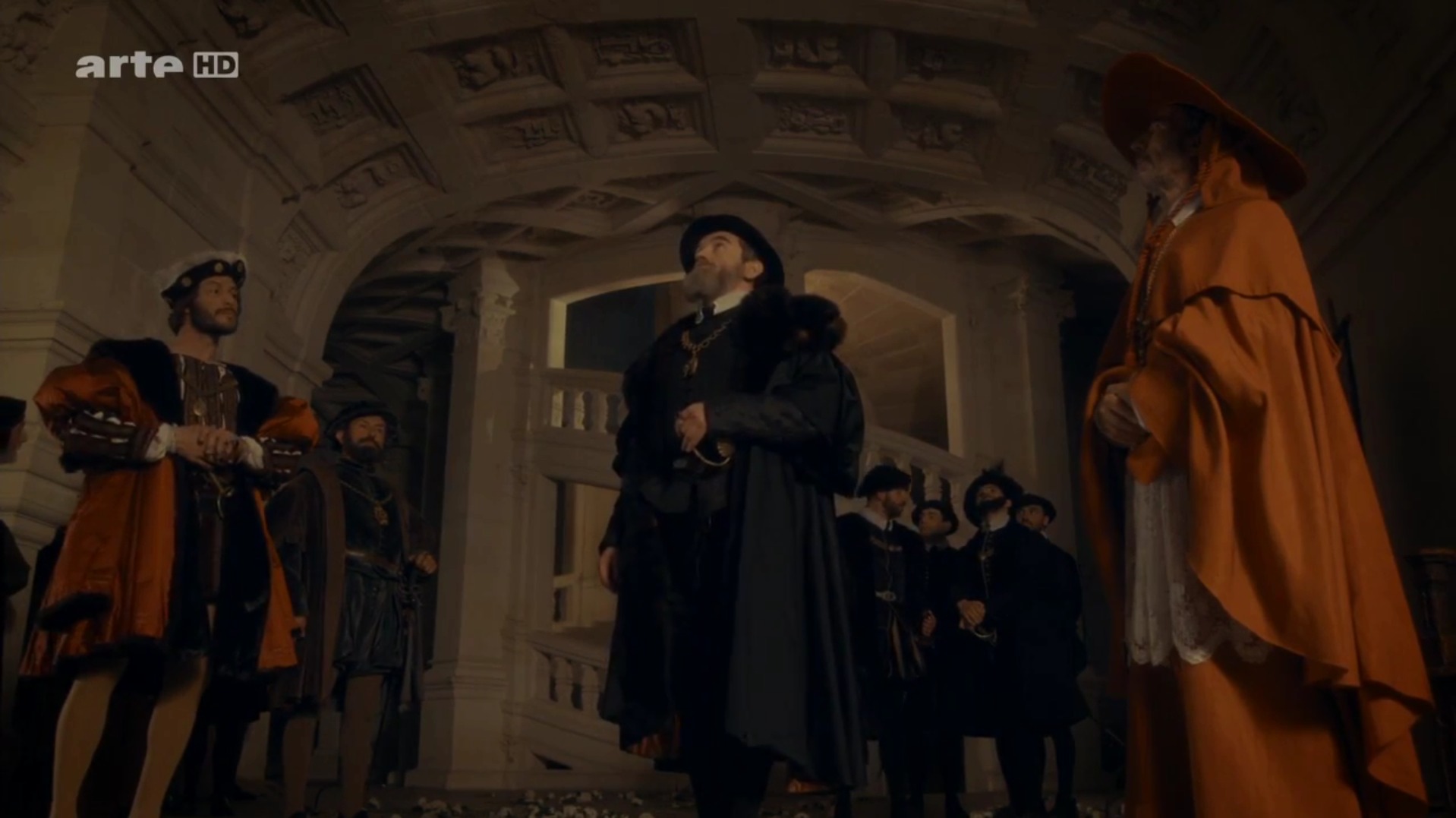
One) The Iconography of Being Out to Impress
There is definitely drone traffic above Chambord. Visitors use drones (and I have seen some hazardous overflights
on YouTube, reminding of spaceships passing narrow passages in the skyline of a heavenly Jerusalem), but also the
scholars use drones, the scholars who research the Château de Chambord, using state-of-the-art-technology.
As can be seen for example in the truly magnificent Arte documentary
on Chambord. A documentary that was being done in 2015, at a time drones had been more or less established as an art
historical tool. We will see in the next episode of our New Salvator Mundi History, an episode set at the (medieval)
village of Conques, that in 2011/12 (when an Arte documentary was being done on this village) that drones were pretty
new. ›And this is a drone?‹, the elderly scholar being interviewed in the village streets was asking the reporter.
›The camera‹, the reporter explained, ›being mounted on a helicopter‹.
The Château de Chambord, let’s say it right at the beginning, is topped by a crown, and it is an imperial crown,
topped by a lily. But let’s be cautious as well right from the beginning. What the drone may see, while doing hazardous
overflights, is a replica. The authentic lantern emperor Charles V may have seen in 1539, since the main tract, the
donjon of Chambord was finished as was the lantern, is kept inside. Due to heavy erosion the original had to be replaced.
And now we may begin to experience our dream, as well as to work our way through the swampy grounds of Chambord
historiography.
When I embarked to do this episode, my rather naive idea was to look at what we really do know about the visit of
the Emperor of the Holy Roman Empire, Charles V (Charles Quint) at Chambord in 1539, when he was welcomed and shown
around by his arch enemy, the French king (and builder of Chambord) Francis I. The Arte documentary beautifully stages
this visit. The actors, obviously well prepared, give a fine performance, especially the two actors in the roles of
Francis I and Charles V, respectively. It is beautifully staged how one performer watches – but not too obviously –
another one looking.
Looking at Chambord. Its central double helix staircase (perhaps designed by Leonardo da Vinci), its ceilings,
its rooms. And yes, the decorations are full of crowns as well, various kinds of crowns, crowns of the Saint-Louis-type,
but also, again, imperial crowns, combined with the personal insignium of Francis I, the salamander, as well as with
the letter F.
What the documentary is doing, as all historical (drama) film is doing, is staging an idea of history. The directors
stage what they believe to know about this visit, staging an idea of how the two rulers may have behaved
But what do we really know? On what sources is this based, if two actors give a performace of one man looking, and
another one obviously wanting the one looking and inspecting to be impressed by what he sees, pretending – the
Renaissance notion of sprezzatura may come in – as if this was just a casual walk, a casual visit, which definitely
it was not, and both men, both actors, both actors in history were well aware of that. The imperial crown was
Charles V’s, and not Francis I’s.
In 1539 Francis I was probably not as relaxed as this documentary (again: it is beautifully done) is suggesting.
He had lost his eldest son, meant to be his successor, three years ago, and there was no real prospect for getting
an imperial crown, topped by a lily, anymore. But we will come back to that in the end, because, first, we have to
take a closer look at what I am calling a historiographical swamp, or better: at the rivalry of two mean, two rulers,
that is being continued by means of historiography, by various historiographical traditions as if the two rulers
would be still wrestling in the mud.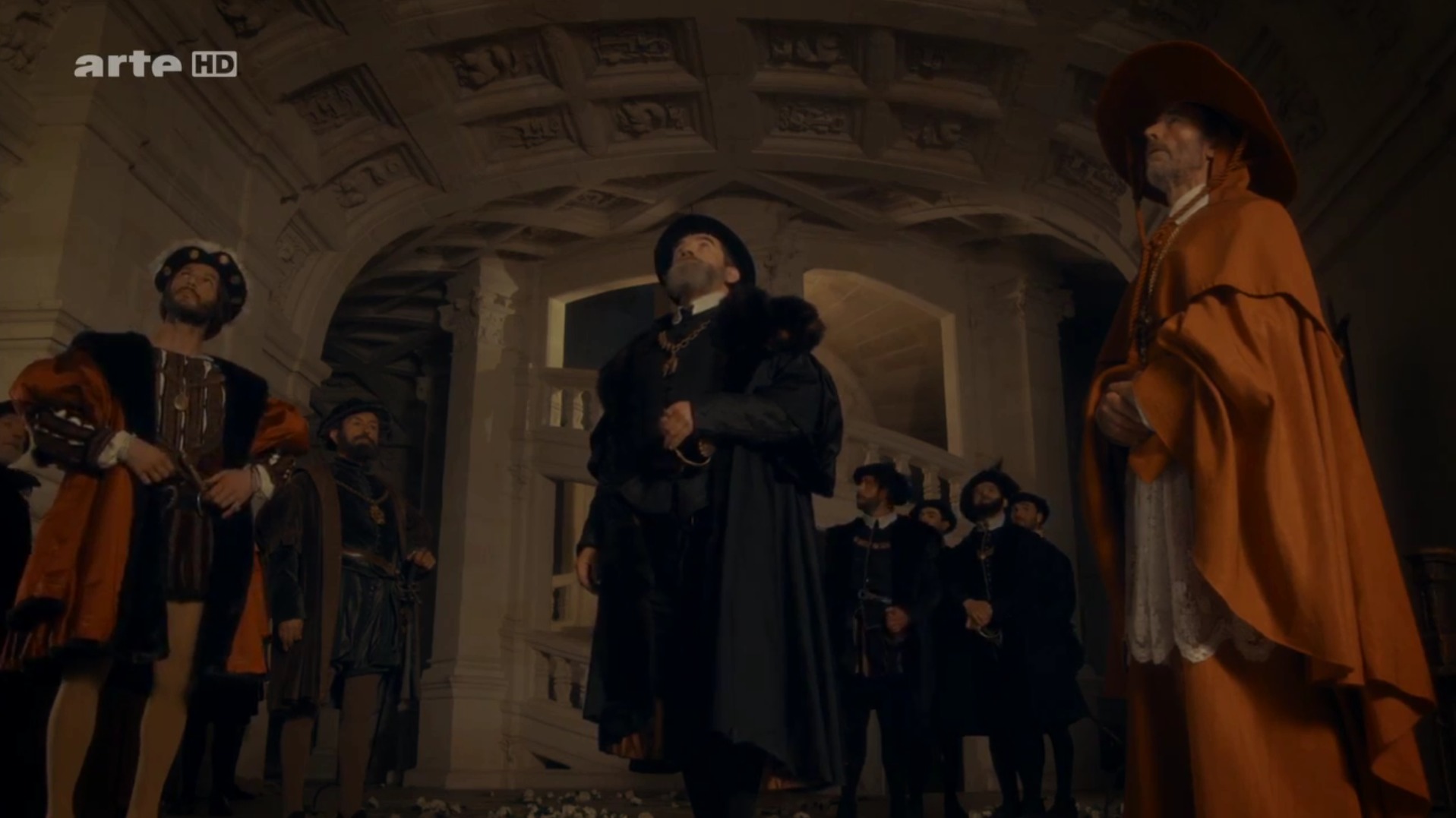
Two) A Historiographical Swamp
Biographies of Charles V do not mention the visit of the Emperor at Chambord at all. This is small history, too small
to be reported, one may think. Big history is the treaty of Chambord, years later (but at the time of this treaty (1552)
Francis I was already dead). But here we are already in the middle of swampy grounds. Because, of course, Habsburg
historians do know about this visit on occasion of a journey of Charles V to Gent, when Francis I allowed the Emperor
to cross French territory. Do Habsburg historians, do biographers of Charles V only act according to what is said in
Vienna if somebody is obviously, too obviously out to impress you? Do not even ignore it, they say (›Nicht mal
ignorieren!‹), and this is perhaps the strategy of Habsburg historians as far as the pretentiousness of Francis I
is concerned (who, at least, was married to a sister of the Emperor).
Of course I am aware of what Charles V is supposed to have said, according to French tradition. He is supposed to have
said that Chambord was the epitome of what human industriousness may achieve. But this is what a French geographer
transmitted in the 17th century, a geographer who was probably transmitting hearsay, and, at any rate someone who
cannot be regarded as a contemporary source. Perhaps the geographer, Pierre Davity, was accurate as to the hunting of
European fallow deer that was organized, but Davity is certainly
not a source a play or a film could be based on. Another French source is closer to the event, Claude Chappuis,
a valet de chambre of Francis I who, later, seems to have become his librarian, and who did write ›A Complaint of Mars‹,
as to the Emperor crossing French territory. And so on (for the more Romanesque view see here).
One may now go back to the Habsburg side, repeating what they have to say as to a construction at Amboise, a sort
of stair device meant to help one to get on horseback, a construction that seems to have been combined with torches.
A contruction that seems to have caught fire. No one was hurt, but the pride of the French king obviously was, since
he seems to have reacted with an outburst of anger (and we may be back with musing about the ideal of Renaissance
sprezzatura again, for which this outburst certainly was not a good example). And so on.
Chambord is a place to forget time and space, but it has a history, a small one, and a big one, and I am speaking
of a historiographical swamp, since, obviously, the attempts to write the history and the art history of Chambord on
professional grounds are relatively new. There is not much to rely on. And if we are asking about the crowns, about
the imperial crown, topped by a lily, for example – well, one Chambord scholar (Wolfram Prinz) does not even see an
imperial crown, but only a royal one. But this was, perhaps, at a time, drones, helicopters with a camera, had not yet
been invented (picture of the original lantern below: Hélène Rival; staircase: Cousin).

Three) An Imperial Crown Topped by a Lily
The legend of Chambord includes rooms that were being ornated by Leonardo da Vinci paintings. Of course, we now have
to come to that. And yes, we have to say it now: The Salvator Mundi version Cook has one thing in common with the
chateau: obviously it is the double helix, a staircase here, the hair of Christ there. But what are we allowed to make of this?
Let’s be as disinterested as, say, a Michelangelo scholar looking at Leonardo: let’s just enlist the questions we have:
can the Salvator Mundi as the Château de Chambord be regarded as something that Leonardo da Vinci contributed to
at the end of his life? The librarian of Francis I probably would have known, but it seems that he did not tell us.
And further questions we have: if Francis I was also into occult sciences, as modern Chambord scholars are telling us,
what does this mean as to his relation to Leonardo? And what purpose have the many, many crowns at Chambord?
Do they manifest the king’s aspiration for the imperial crown in 1519? Are they stubborn manifestations of not wanting to
give up the aspiration for the crown of the Empire? Do the crowns tell us that Francis I was thinking that, perhaps
not him, but his son and successor, would, one day, become emperor?
Then we would come circle again: Chambord is a dream, meant to make us forget about space and time (picture below: Nathalie Seigne).
Selected literature:
Thibaud Fourrier / François Parot, Qu'est-ce que Chambord? étude du décor sculpté et nouvelles interprétations,
in: Mémoires de la société des sciences et lettres du Loir-et-Cher, Société des sciences et lettres de Loir-et-Cher 2010,
Comprendre Chambord à travers son décor sculpté, p. 21-55
Leopold Ritter von Sacher-Masoch, Der Aufstand in Gent unter Kaiser Carl V., Schaffhausen 1857
1516: Paolo Emilio, Italian-born humanist at the court of Francis I, publishes the first four books of his history of the Franks; death of Boltraffio.
1517: Leonardo da Vinci, with Boltraffio and Salaì, has come to France (picture of Clos Lucé: Manfred Heyde); 10.10.2017: Antonio de Beatis at Clos Lucé
1517ff: Age of the Reformation; apocalyptic moods; Marguerite of Navarre, sister of Francis I, will be sympathizing with the reform movement; her daughter Jeanne d’Albret, mother of future king Henry IV, is going to become a Calvinist leader.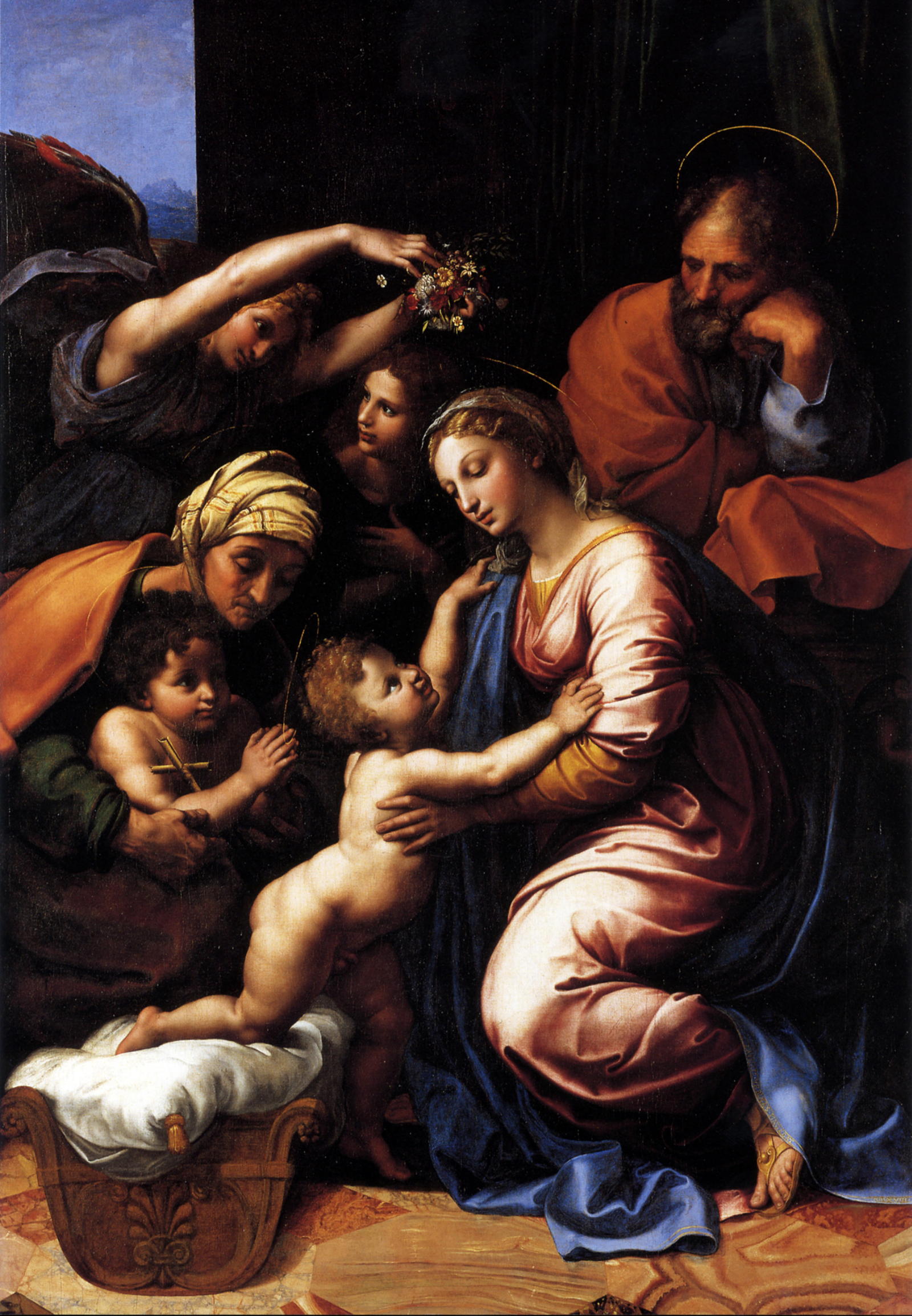
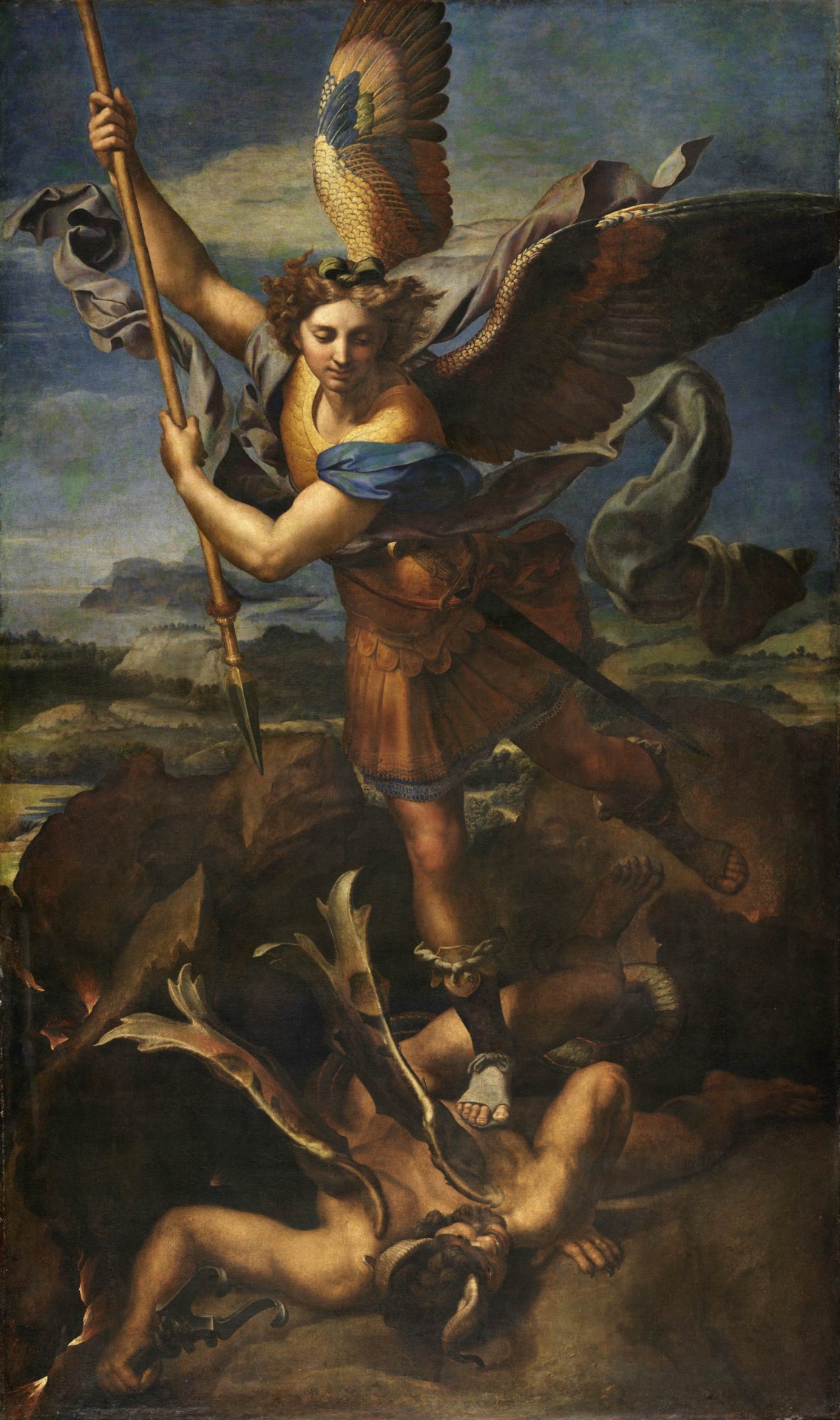
1518: the Raphael workshop produces/chooses paintings to be sent to France; 28.2.: the Dauphin is born; 13.6.: a Milanese document refers to Salaì and the French king Francis I, having been in touch as to a transaction involving very expensive paintings: one does assume that prior to this date Francis I had acquired originals by Leonardo da Vinci; 19.6.: to thank his royal hosts Leonardo organizes a festivity at Clos Lucé.
1519: death of emperor Maximilian I; Paolo Emilio publishes two further books of his history of the Franks; death of Leonardo da Vinci; Francis I is striving for the imperial crown, but in vain; Louise of Savoy comments upon the election of Charles, duke of Burgundy, who thus is becoming emperor Charles V (painting by Rubens).
1521: Francis I, who will be at war with Hapsburg 1526-29, 1536-38 and 1542-44, is virtually bancrupt.
1523: death of Cesare da Sesto.
1524: 19.1.: death of Salaì after a brawl with French soldiers at Milan.
1525: 23./24.2.: desaster of Francis I at Pavia. 21.4.1525: date of a post-mortem inventory of Salaì’s belongings.
1528: Marguerite of Navarre gives birth to Jeanne d’Albret (1528-1572) who, in 1553, will give birth to Henry, future French king Henry IV.
1530: Francis I marries a sister of emperor Charles V.
1531: death of Louise of Savoy; the plague at Fontainebleau.
1534: Affair of the Placards.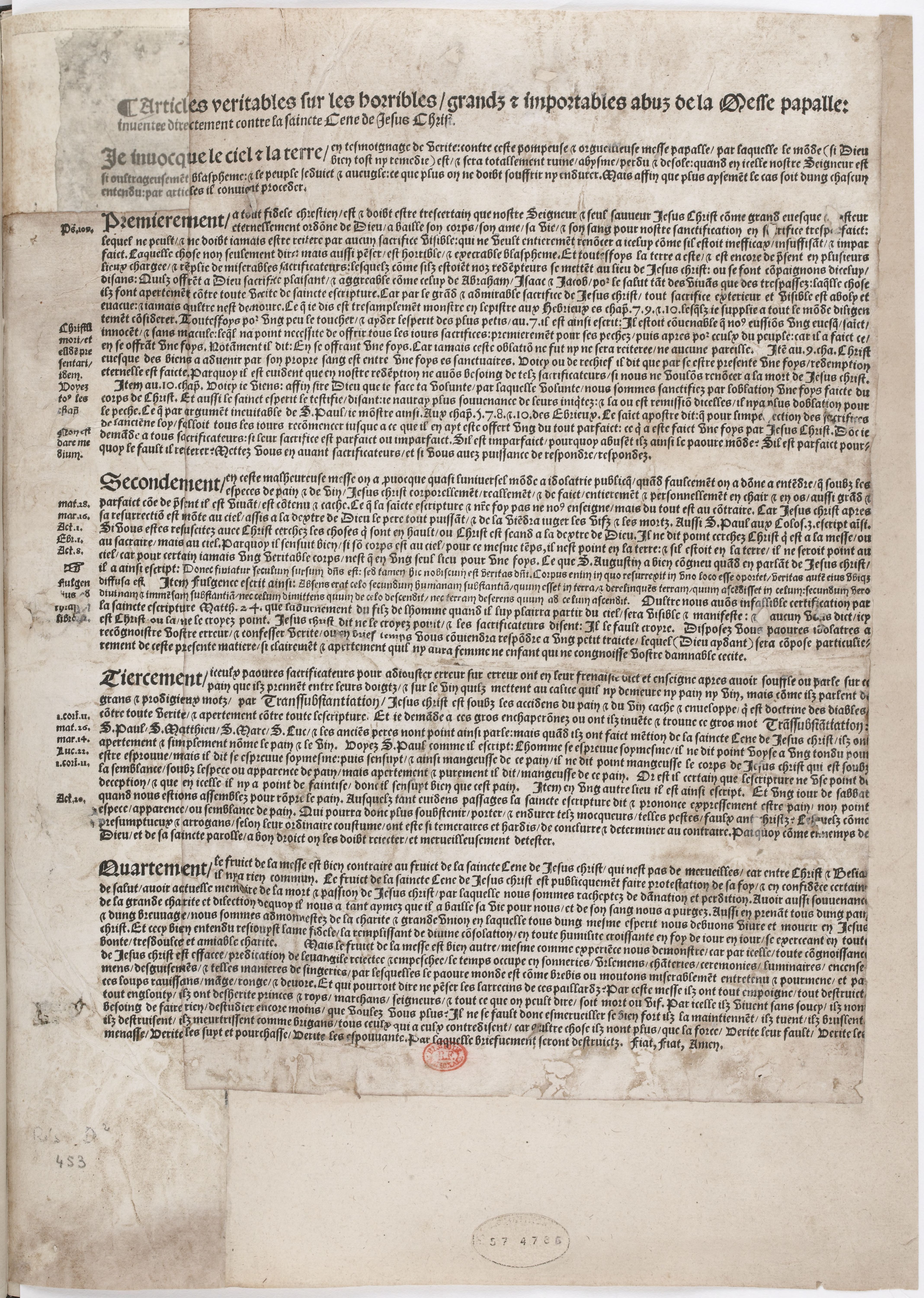
1539: the still unfinished chateau of Chambord is being shown by Francis I to Charles V.
1540s: the picture collection of Francis I being arranged at Fontainebleau.
1544: January: Marguerite of Navarre sends a letter of appreciation to her brother, king Francis I., who has sent her a crucifix, accompanied by a ballade, as a new year’s gift.
1547: death of Francis I.
1549: death of Marguerite de Navarre; death of Giampietrino.
1553: Jeanne d’Albret gives birth to Henry, the future French king Henry IV and first Bourbon king after the rule of the House of Valois.
1559: publication of the Heptaméron by Marguerite de Navarre.
1562-1598: French Wars of Religion.
1570: death of Francesco Melzi.
1589: Henry, grandson of Marguerite de Navarre and grand-grandson of Louise of Savoy, but by paternal descent a Bourbon, is becoming French king as Henry IV.
2015: an exhibition at the Château of Loches is dedicated to the 1539 meeting of king and emperor (see here).
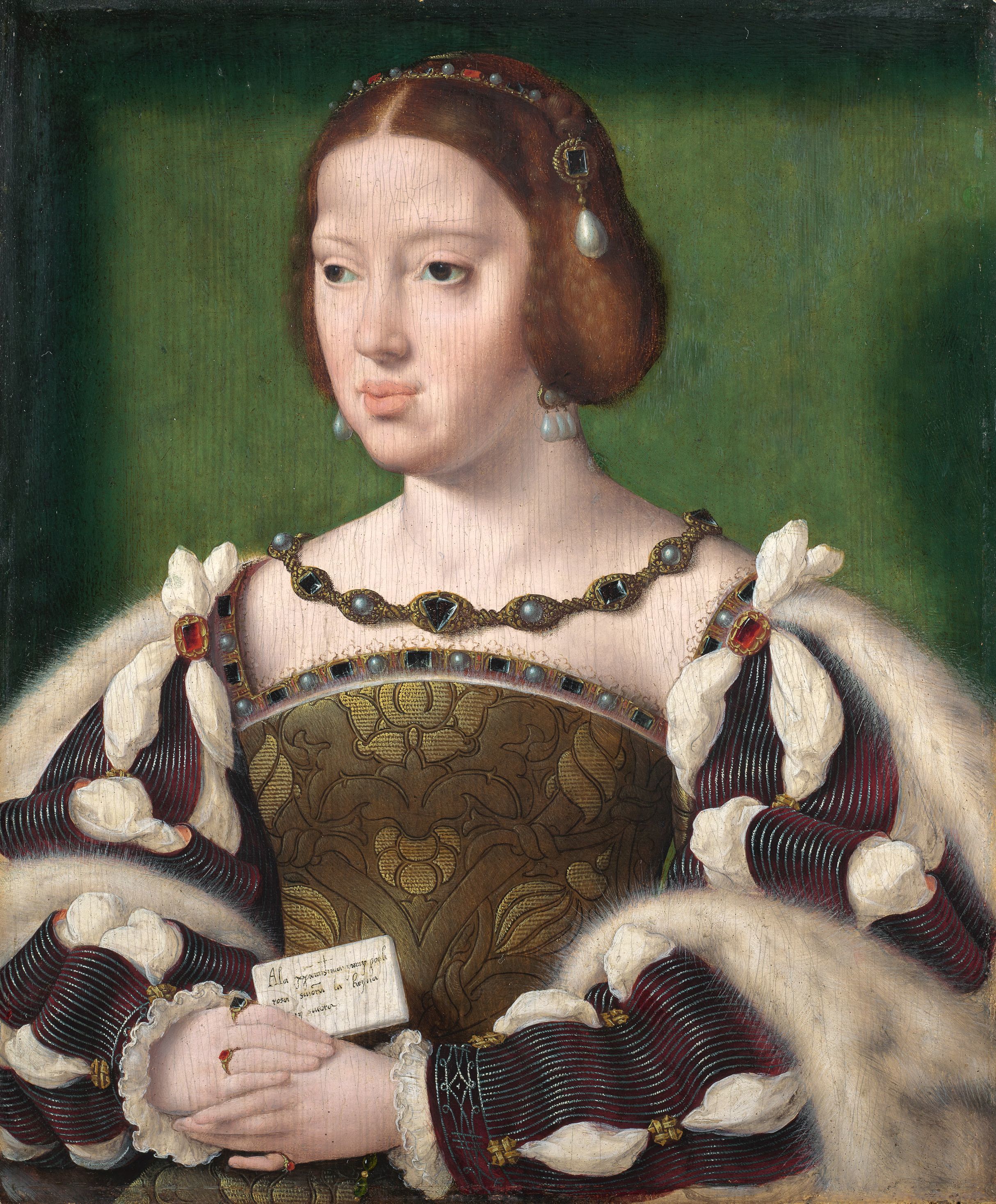
Here we look at two Valois court style portraits, one associated with the workshop of Joos van Cleve, the other with the workshop of Jean Clouet, both court painters of Francis I. We see Eleonore of France, second wife of Francis I, and one of her court ladies, Beatrix Pacheco.
See also the episodes 1 to 4 of our New Salvator Mundi History:
Francis I and the Crown of Charlemagne
And:
MICROSTORY OF ART
ONLINE JOURNAL FOR ART, CONNOISSEURSHIP AND CULTURAL JOURNALISM
HOME
© DS